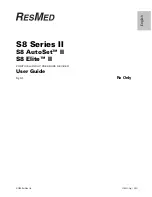
Transmitter Indication LED
'RJ
*XQ
3URJUDP,QLWLDOL]HG
Green
OLJKWLVVROLG
3URJUDP3HQGLQJ
Orange
OLJKWLVVROLG
5XQ0RGH
Green
ÁDVKHVWZLFHHYHU\
VHFRQGV
5XQ0RGH
Red
ÁDVKHVWZLFHHYHU\
VHFRQGV
&KDQJH6WLPXODWLRQ/HYHOLQ
5XQ0RGH
Orange
ÁDVKHVWZLFH
Collar / Receiver Indicator
Note – Low battery is indicated by any light going red. Re-charge your unit.
Operation
LED Color
LED Status
Charging
Red
ÁDVKHVHYHU\VHFRQGV
3URJUDP0RGH
Orange
OLJKWLVVROLG
5XQ0RGH
Green
ÁDVKHVHYHU\VHFRQGV
&RQWLQXRXV6WLPXODWLRQ
Green
VWD\VRQIRUWKHGXUDWLRQRI
WKHVWLPXODWLRQ
0RPHQWDU\6WLPXODWLRQ
Green
ÁDVKRQFH
Find the Best Intensity Level for your Dog
All dogs respond differently to different levels of stimulation. Also consider that a dog will get used to a level
and may require you to increase it over time. The most important thing is to start at a very low level. Twitch-
ing ears can be a great indication that the dog is reacting to the level. The Master Transmitter should be set
to this level for some time, so you can monitor behaviour change.
Timing of stimulation is the most important thing. Dogs are place-oriented animals, and the faster you can
reinforce or correct, the better chance the dog has to link the stimulation to its behaviour. We are talking
about one-quarter of a second or less. Be prepared.
I am sure you have heard: if you can’t reinforce or correct at the instant of the desired behavioural change,
don’t bother trying
.
For most field users, it is best to use a momentary stimulation. It provides a short, repeatable stimulation
regardless of the user’s experience.
12














































